Reading Like a Historian Lessons for K-5
With the support of the Educating for American Democracy (EAD) participants and in collaboration with Los Angeles Unified School District, we have developed 10 new Reading Like a Historian lessons for K-5 classrooms aligned to the themes and design principles of the EAD Roadmap. EAD participants have issued a call to action to strengthen history and civic learning throughout the country.
The EAD Roadmap is an inquiry-based framework organized around seven content themes. Each theme has corresponding driving and guiding questions to support student learning. The following descriptions of our new Reading Like a Historian lessons identify how each aligns with EAD themes and questions.
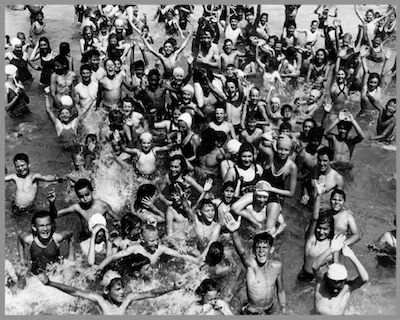
City Pool Desegregation
How can we learn about something that happened 100 years ago? Our City Pool Desegregation lesson introduces students to historical documents, as well as to the history of a lesser known desegregation battle. By examining short excerpts of a speech and newspaper articles, students learn about how civil rights leaders fought against segregation of Los Angeles city pools and won.
We designed this lesson with K-2 classrooms in mind, but it is readily adaptable for use with older students. It focuses on the EAD theme of “Civic Participation” for grade 2 by presenting students an inquiry into one history of how Americans have “come together in groups, made decisions, and affected their communities.” Through guided exploration of the history of city pool desegregation in Los Angeles, the lesson addresses the EAD history driving question, “How have people made our community better?” (HDQ1.1C), as well as the EAD history guiding questions, “What are stories of when/how people have changed the community for the better?” (HSGQ1.1A) and “What makes a community fair?” (HSGQ1.1D).
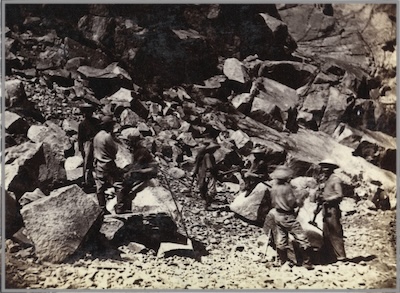
Historical Photos of Chinese Railroad Workers
Too often, archival photos are not analyzed as historical sources. Instead, they are treated as windows into the past. This lesson introduces students to reasoning about photographs as historical evidence through 4 activities. Students are first given an opportunity to practice thinking historically with a familiar classroom scene, then examine different historical photographs of Chinese railroad workers in the 19th century.
This lesson focuses on the EAD theme of “Our Changing Landscapes” for grade 2 and addresses the EAD history driving question, “How do communities shape the land? How does the land shape communities?”(HDQ2.1B). Through scaffolded analysis of photographs as historical evidence, it also addresses the history guiding questions, “How have communities changed over time? Why have they changed? What is the evidence for change?” (HSGQ2.1C). This lesson was also designed with K-2 classrooms in mind but can be readily adapted to use with older students.
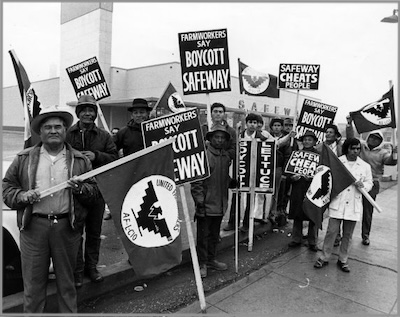
Farmworker Movement
This lesson focuses on farmworker activism of the 1960s and 1970s. Students analyze a historical photograph, newspaper article, and interview with Larry Itliong to investigate how Filipino American and Mexican American farmworkers organized to improve their working conditions.
This lesson focuses on the EAD theme of “Civic Participation” for grade 2 by presenting students an inquiry into one history of how Americans have “come together in groups, made decisions, and affected their communities.” It was also designed with K-2 classrooms in mind but can be readily adapted to use with older students. Through guided exploration of the history of farm workers in California’s central valley, it addresses the EAD history driving question, “How have people made our community better?” (HDQ1.1C), as well as the EAD history guiding questions, “What are stories of when/how people have changed the community for the better?” (HSGQ1.1A) and “What makes a community fair?” (HSGQ1.1D).

California Mission Revolt
What started the Chumash Revolt of 1824? This lesson plan introduces students to the work of historians through guided inquiry of historical documents related to the largest Native Californian revolt against the mission system.
This lesson was designed with 3rd- and 4th-grade classrooms in mind but can be readily adapted to use with older students. It focuses on the EAD theme of “Our Changing Landscapes” for grades 3-5. It addresses the EAD history driving question, "Why should we learn about the history of the land we inhabit?" (HDQ2.2A) and the EAD history guiding questions, "Who lived on the North American continent before the United States existed? What kinds of evidence helps us learn their histories?" (HSGQ2.2A).
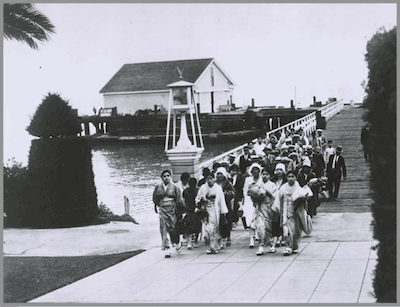
Angel Island
How can we make sense of contradicting accounts of the past? In this lesson, students examine a newspaper article and a poem carved into the wall of the Angel Island Immigration Station to explore what conditions were like for Chinese immigrants detained at Angel Island.
This lesson was designed with 3rd- and 4th-grade classrooms in mind but can be readily adapted to use with older students. It is aligned to the themes and design principles of the EAD Roadmap. It focuses on the EAD theme of “We the People” for grades 3-5. It addresses the EAD history driving questions, “How have push-pull factors changed the U.S. population over time?” (HDQ3.2A) and “How have different groups shaped our society?” (HDQ3.2B) as well as the EAD history guiding questions, “Where, when, and why have people from different parts of the world come to the U.S.?” (HSGQ3.2B) and “How do the stories of Indigenous Americans, African Americans, Euro- Americans, Asian Americans, and Latinos and Latinas help us better understand who we are?” (HSGQ3.2F).
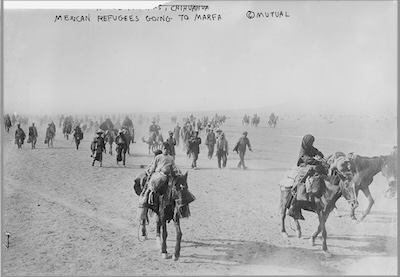
First Wave of Mexican Migration
Perhaps one million Mexicans—about 1 in 15—came to the United States from 1900 to 1930 in the first large wave of Mexican migration to the country. In this lesson plan, students analyze historical documents to answer the central historical question: What caused the first wave of migration from Mexico to the United States?
This lesson was designed with 3rd- and 4th- grade classrooms in mind but can be readily adapted to use with older students. It focuses on the EAD theme of “We the People” for grade 4 by presenting students an inquiry into one history of how “the nation’s population [has] changed over time.” Through guided exploration of the history of the first wave of Mexican migration to the United States, it addresses the EAD history driving questions, “How have push-pull factors changed the U.S. population over time?” (HDQ3.2A) and “How have different groups shaped our society?” (HDQ3.2B) as well as the EAD history guiding questions, “Where, when, and why have people from different parts of the world come to the U.S.?” (HSGQ3.2B) and “How do the stories of Indigenous Americans, African Americans, Euro- Americans, Asian Americans, and Latinos and Latinas help us better understand who we are?” (HSGQ3.2F).
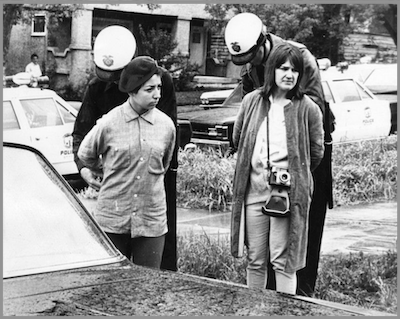
Chicano Student Walkouts of 1968
This lesson focuses on one of the largest student protests in American history: the East Los Angeles walkouts of 1968. Through scaffolded analysis of primary sources, students investigate why students participated in these protests of the Chicano Movement.
It focuses on the EAD theme of “Civic Participation” for grades 3-5. It addresses the history driving questions, “Why and how do people take action in order to solve problems that affect them and others?” (HDQ1.2A) and “What kinds of challenges arise when people decide to take action to try to solve problems?” (HDQ1.2B). It also addresses the history guiding questions, “What have people done from positions of disempowerment to achieve change?” (HSGQ1.2.C); “What or who are some great exemplars of civic action or constructive dissent in the United States?”(HSGQ1.2.D); “What have people done when they thought something was wrong in their community? in their state? in the United States?” (HSGQ1.2A); and “What has tended to motivate people to engage in civic action throughout history?” (HSGQ1.2E)
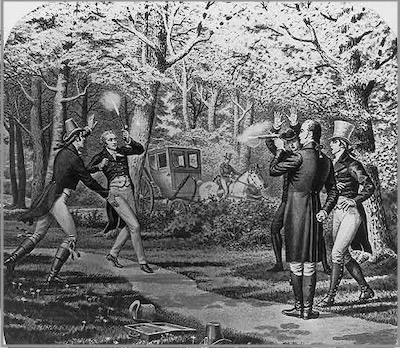
Burr-Hamilton Duel
On July 11, 1804, Vice President Aaron Burr fatally shot Alexander Hamilton in a duel on a bank of the Hudson River in Weehawken, New Jersey. Many Americas were outraged by Hamilton’s death at the hands of his political rival, but details about what had transpired were disputed by the few individuals who were present at the duel. In this lesson, students interrogate competing accounts to try to figure out what exactly happened at this infamous event.
This lesson was designed with 5th-grade classrooms in mind but can be readily adapted to use with older students. It focuses on the EAD theme of “Civic Participation” for grades 3-5. It addresses the history driving question: "What kinds of challenges arise when people decide to take action to try to solve problems?” (HDQ1.2B) It also addresses the history guiding question: “What have people done when they disagreed with their community members, teammates, or leaders?” (HSGQ1.2A) The lesson also addresses the civic driving question: “How can we work with others (even those who disagree with us) to help make change in society?” (CDQ1.2C)
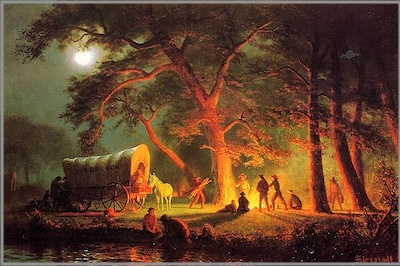
Overland Trails
Between 1840 and 1870, hundreds of thousands of Americans and European immigrants traveled a network of overland trails to settle in the American West. The routes they followed were as long as 2,000 miles, and their journeys took months to complete. In this lesson, students critically examine historical accounts of travel on the busiest of these trails, the Great Platte River Road, to glean evidence about what life was like for migrants on the trail.
This lesson was designed with 5th-grade classrooms in mind but can be readily adapted to use with older students. It focuses on the EAD theme of “Our Changing Landscapes” for grades 3-5. It addresses the history driving questions: "How did land change the ways people live, govern, and migrate? And how did people's choices change the land?" (HDQ2.2C). It also addresses the history guiding question: How did various communities decide (or not) where and when to migrate and settle?" (HSGQ2.2D).
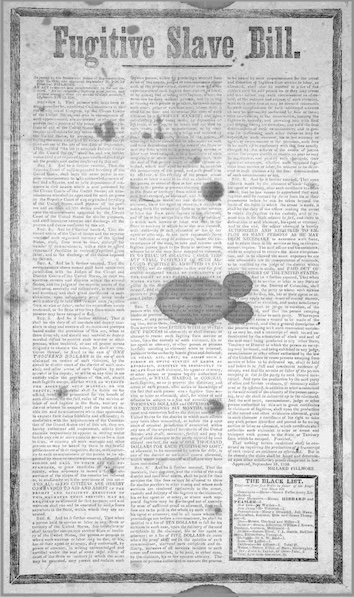
Fugitive Slave Act
Congress struck the Compromise of 1850 to resolve conflicts between pro-slavery advocates and “free-soilers” who opposed the expansion of slavery into new territories. Part of the Compromise was the Fugitive Slave Act of 1850, which required government officials in free states to capture people who had escaped slavery and return them to their former enslavers. The Fugitive Slave Act outraged abolitionists, who in turn organized resistance to subvert the unjust law. In this lesson, students consider what articles from a prominent abolitionist newspaper, The Liberator, can teach us about resistance in Boston.
This lesson was designed with 5th-grade classrooms in mind but can be readily adapted to use with older students. It focuses on the EAD theme of “Civic Participation” for grades 3-5. It addresses the history driving questions: "Why and how do people take action in order to solve problems that affect them and others?” (HDQ1.2A) It also addresses the history guiding question: “What have people done when they thought something was wrong in their community? In their state? In the United States?” (HSGQ1.2A)

These lesson plans were made possible by a grant from the National Endowment for the Humanities: Implementation Phase of the Educating for American Democracy Initiative: Pilot Projects in Elementary.
Any views, findings, conclusions, or recommendations expressed in these lessons do not necessarily represent those of the National Endowment for the Humanities.